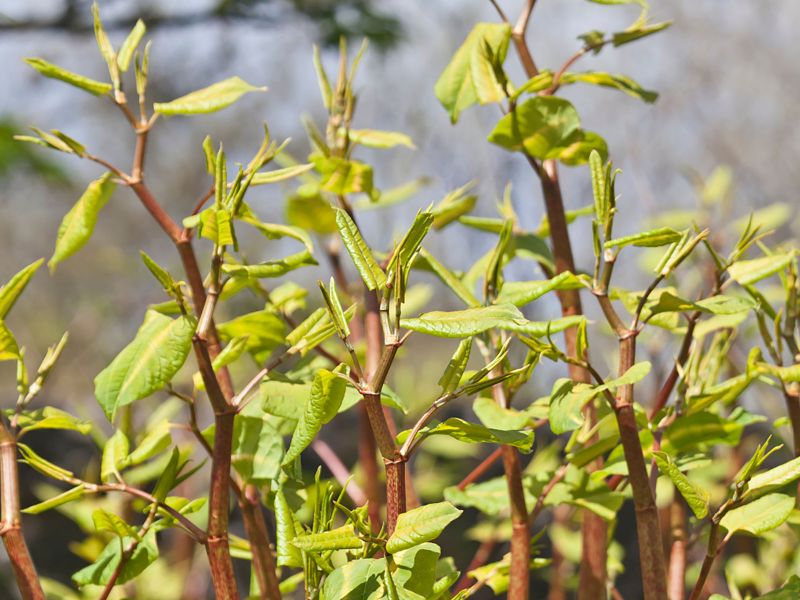
Dwarf Japanese knotweed - Reynoutria japonica var. compacta
Dwarf Japanese knotweed is Japanese knotweed’s smaller, smarter solider. So, don’t let this weed sneak up on you. For all its cuteness, dwarf Japanese knotweed has the ability to create new invasive weeds by breeding with other knotweed, which is a real problem!
What does Dwarf Japanese knotweed look like?
Dwarf Japanese knotweed looks just like Japanese knotweed, only pocket-sized! It grows up to a metre tall, yields Barbie-pink flowers and crinkle-cut leaves.
Lesser knotweed - Persicaria campanulata
As invasive weeds go, lesser knotweed is less of a threat than others on this list. In fact, this variety doesn’t even look like knotweed.
What does Lesser knotweed look like?
Bearing powder-pink flowers, straight stems and long, pointed leaves. It usually grows between one and two metres tall in the summer.
Himalayan knotweed - Persicaria wallichii
Thriving near flowing water, Himalayan knotweed is sometimes confused for Japanese knotweed, but the differences are simple to spot.
What does Himalayan knotweed look like?
Whilst Japanese knotweed leaves are shield-shaped and bright green, Himalayan leaves are narrow and emerald green. Plus, Himalayan knotweed produces pink-purple flowers in the warmer months.
Japanese knotweed – Fallopia japonica
Japanese knotweed is property enemy number one, and laws have been enacted to stop it spreading throughout the UK. However, this invasive weed still manages to do battle with home and landowners, costing a bomb in removal fees, property diminution and rejected mortgages applications.
What does Japanese knotweed look like?
In terms of appearance, Japanese knotweed emerges from the ground in spring looking like a red/purple asparagus and continues to grow tall and fast, often reaching two metres high in the summer. At the end of summer, tiny cream-coloured flowers will bloom before dying back for the winter. Japanese knotweed will then sleep in its vast underground root system until spring. Remember, this alien species will spread further if handled incorrectly – so stay well back!
Giant knotweed - Fallopia sachalinensis
Giant knotweed is a 'goliath' in the invasive-weed battlefield. Like Japanese knotweed, giant knotweed thrives near areas of water. Thankfully, this breed of invasive weed wasn’t as popular with Victorian society when it was brought to the UK, so it is far less likely to invade.
What does giant knotweed look like?
As its same suggests, giant knotweed is large and fast-growing, reaching heights of five metres in a single summer, whist its leaves are narrow, spear-ended and long.
Bohemian knotweed – Fallopia x bohemica
Bohemian knotweed is a hybrid of Japanese knotweed and giant knotweed, which is as daunting as it gets! In fact, researchers suggest the newly-founded Bohemian knotweed is stronger and more persistent than Japanese or giant knotweed. Currently, Bohemian knotweed is less of a threat than Japanese knotweed, but scientists suggest it is rallying and will soon join the battlefront as one of the UK’s most invasive species!
What does Bohemian knotweed look like?
Bohemian knotweed is large. Its leaves are oval and pointed and it boasts green-white petalled flowers in the summer.
Are you at war with Japanese knotweed or one of its allies? Contact us today to discuss your options for removal and a treatment plan.